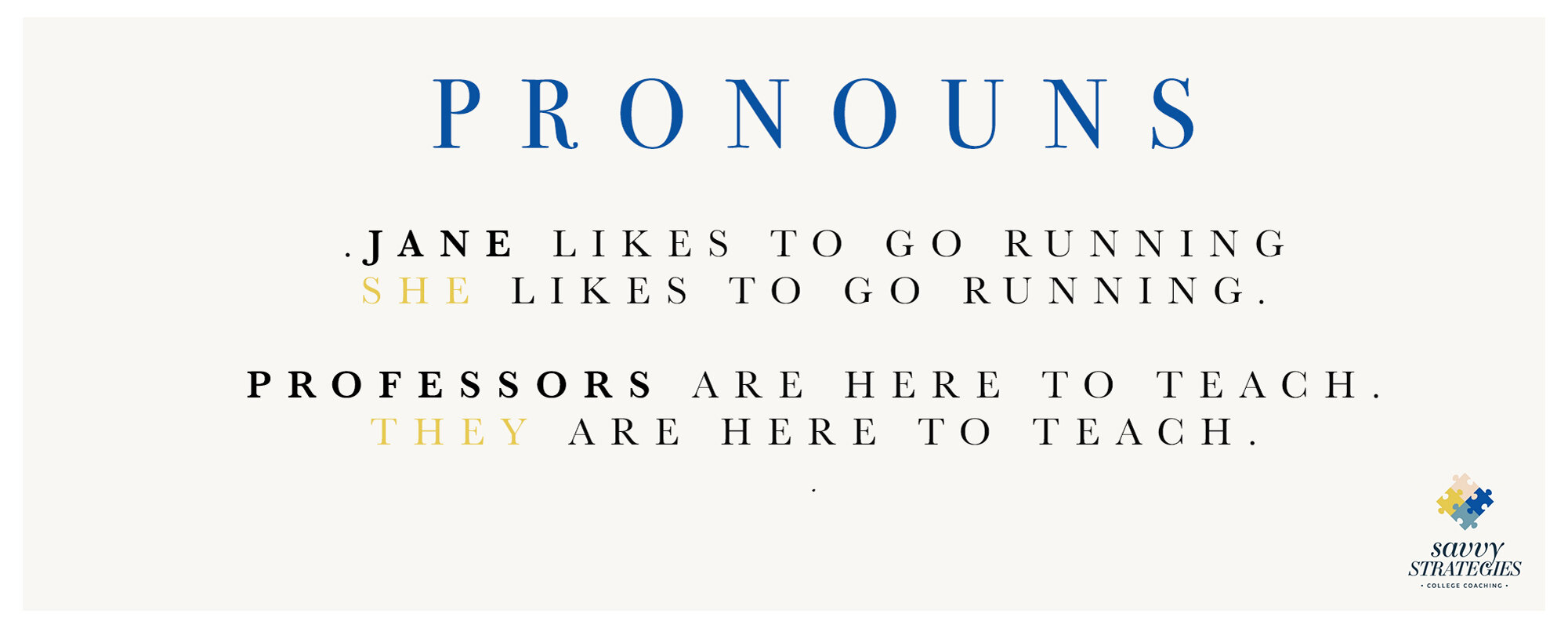Parts of Speech
How do I know what the subject of a sentence is?
What’s the difference between an adjective and an adverb?
What’s the purpose of a verb?
First things first.
In order to get the ACT score that you need, these are the kind of questions you will need to be able to answer.
Yes, they’re basic, but at the end of the day, if you can’t find a sentence’s subject and verb, how will you be able to answer all those comma questions?
So what are the parts of speech?
Glad you asked! These are the categories that every single word belongs in. For the sake of this article, we are going to stick to the eight major parts of speech — no need to get super technical here!
Nouns
Unless you’ve been sleeping in class (don’t hide! We know there’s a few of you out there), you’ve probably heard that a noun is a person, place, thing, or idea.
Another distinguishing feature of this part of speech is that it is able to be made plural. No other category of word can do this!
Here are some examples:
*Be aware that there are many different kinds of nouns: possessive nouns, collective nouns, and proper nouns to name a few.
Pronouns
A pronoun is a word that takes the place of a noun. These are important to use in your own writing, so you don’t sound repetitive!
Here are some examples:
*Like nouns, pronouns have many different types. Consider it an “umbrella term.” There are possessive pronouns, indefinite pronouns, reflexive pronouns, and relative pronouns.
Verbs
Verbs show action or state of being. This is the only category that can show tense.
The word “apple” (noun) can’t become “will apple” or “appled.”
The word “ugly” (adjective) can’t become “was uglying” or “uglied.”
Here are some examples:
*Like nouns and pronouns, there are many types of verbs: linking verbs, action verbs, and helping verbs.
Adjectives
Adjectives describe nouns and pronouns.
Here are some examples:
Adverbs
Adverbs describe verbs, adjectives, and other adverbs. Many adverbs, but not all, end in -ly.
Here are a few examples:
Prepositions
Prepositions are words that show the relationship between a noun or pronoun and other words in a sentence. In the English language, there are about 150 prepositions; however, you do NOT need to have all of these memorized!!
Here are our two tips for identifying prepositions:
1. A preposition is whatever Sandy the fox (or whatever your fox’s name is) can do with a log
Sandy can go OVER the log.
Sandy can go AROUND the log.
Sandy can sit ON the log.
Sandy can go UNDERNEATH the log.
Sandy can walk BESIDE the log.
You get where we’re going with this!
2. Listen to the song linked below that is sung to the tune of Yankee Doodle, but all of the words are replaced with prepositions. It’s catchy, and it’ll be going through your head during the ACT. You’ll thank us later!
https://www.youtube.com/watch?v=GLmjfJyZ-iM
Conjunctions
A conjunction joins two or more words, phrases, or clauses.
Here are some examples:
Interjections
An interjection shows excitement or emotion. As the word suggests, it is interjected, thrown into, the sentence.
Here are some examples:
Was this helpful?
Still have questions?
Contact us to learn more about our personalized tutoring sessions. We are dedicated to setting students up to reach their academic goals! Whether you’re scoring below 20 or above 30, we are here for YOU.







